'The Romans may as well have had lasers'
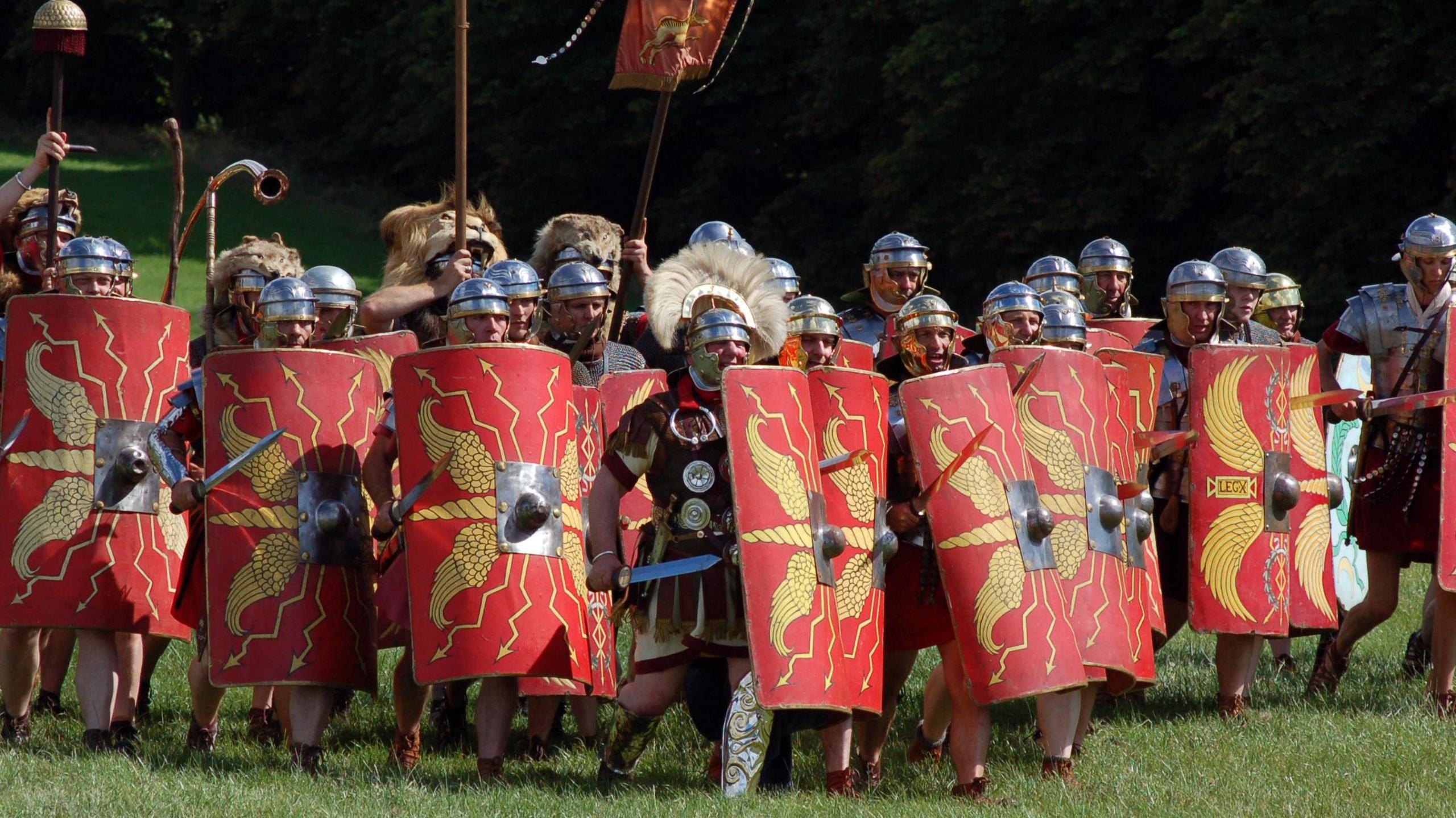
Rome invaded Britain in AD43, using four legions, and would stay for about 350 years
- Published
An author believes he has discovered a previously unknown battle involving a famous lost Roman legion.
Using clues from aerial photography and chance finds in fields, archaeologist and Roman expert Simon Elliott thinks he has identified a major engagement involving the Ninth Legion in Derbyshire.
The Ninth was part of the invasion force which arrived in Britain in AD43 but vanished from the record about 80 years later.
Dr Elliott believes the evidence indicates superior Roman artillery technology led to an overwhelming victory, claiming: "The Romans may as well have had lasers."
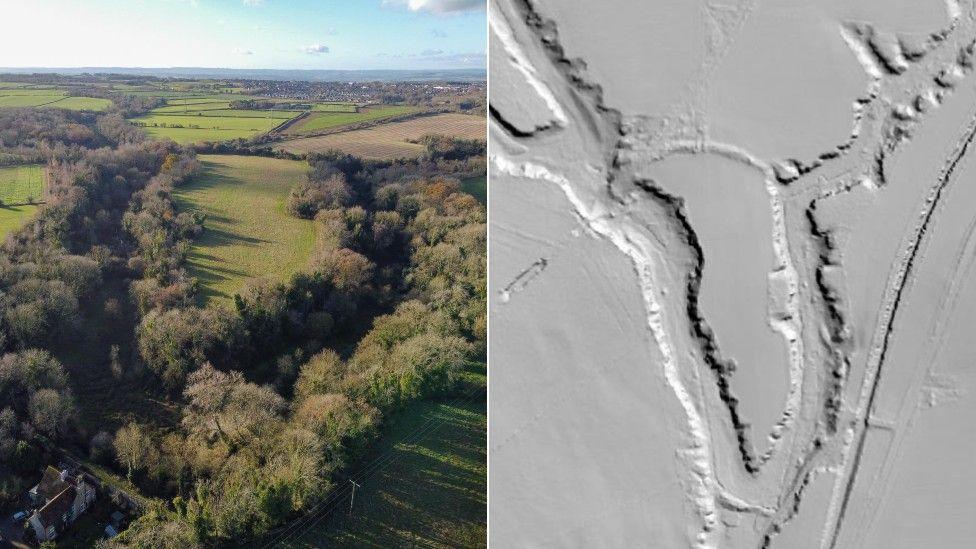
Drone and Lidar views of Markland Grips shows its formidable natural position
Roman sources show four legions took part in the invasion, each one driving in a different direction to subdue any opposition.
The Ninth marched into the Midlands, establishing a presence at Leicester before pushing north.
While it is known this part of the Army went on to set up a fortress in Lincoln, what happened in between has never been resolved.
But Dr Elliott, who has written a number of books on the Roman military, believes he has found substantial clues indicating the advance was marked by a battle near Creswell.
"There are famous Roman sites in the south, and famous Roman sites in the north, but round here is a bit of a gap," he says.
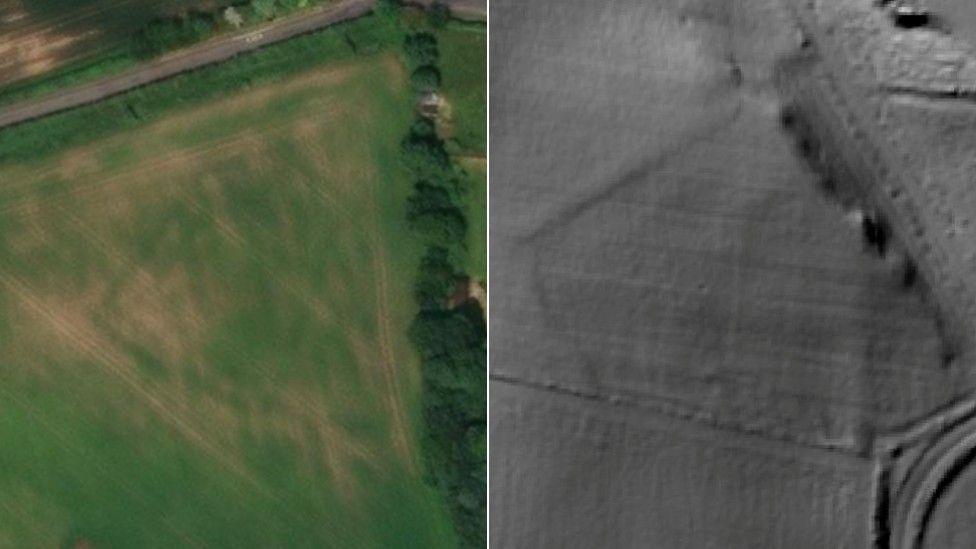
The known ancient site at Camp Hill (left) may have a twin revealed in a Lidar image of a nearby field (right)
Markland Grips, near Creswell, is a known Iron Age fort and nearby is Camp Hill, thought to have been a temporary Roman camp.
Dr Elliott has used aerial photos and Lidar - a remote sensing method that uses a pulsed laser to measure distances to the ground - to study the area.
He believes his investigation has potentially revealed a second camp, with a distinctive playing card shaped layout, nearby.
But even more intriguing, he says, are two inconspicuous areas of disturbed ground nearby.
"To me the camps are a smoking gun," he adds.
"It's an absolutely page one Roman siege technique."
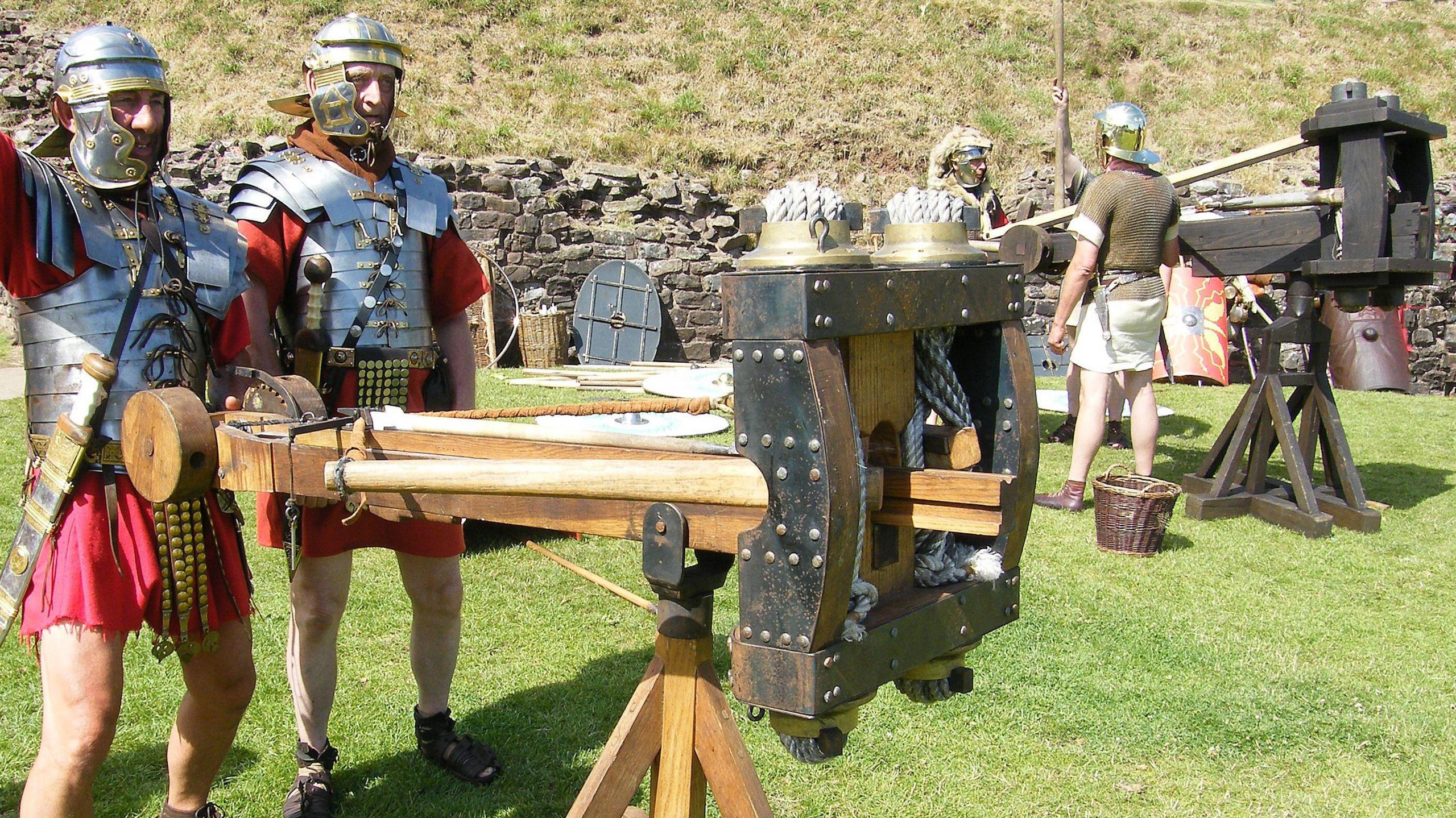
Arrow and stone throwing machines allowed the Romans to bombard defences from a distance
Famed for its order and discipline, the Roman military would approach fortifications in a methodical way.
"It comes across a centre of resistance - in this case a hill fort - and it puts two camps to the north and south to seal it off," explains Dr Elliott.
"And those two levelled off areas, sited on a rise 30 metres above the fort, are the perfect place for artillery platforms, to bombard the area inside.
"The fort, with its triple ditch and bank closing off the headland is brilliant if you are fighting another Iron Age people, but it is completely useless against artillery."
Dr Elliott says the native tribespeople - the Corieltauvi - would "never have seen anything like this before".
"The psychological impact of missiles, either rocks or bolts or both, plunging into what they would have thought was a safe area, would have been huge," he claims.
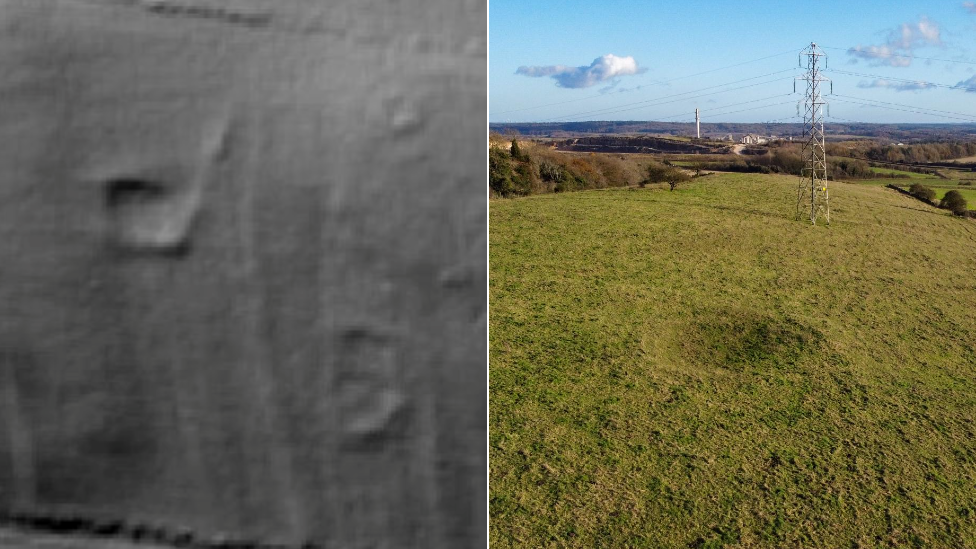
Two areas of disturbed ground overlooking the fort have been suggested as sites for artillery
After the barrage, Dr Elliott says those in the fort "would have surrendered, or the legion would have assaulted it".
"I think the battle of Creswell would have been quite a short-lived affair," he adds.
Dr Elliott acknowledges a few shadows on satellite images are not definitive proof but he has more evidence.
He has spoken to farmers nearby who say they have "turned up a fair bit of material" from their fields.
"This includes a weight from a groma, a Roman surveying tool used only by legionaries, and a piece of armour, known as lorica segmentata, which was worn only by the legions," he explains.

Farmers have found Roman items, some possibly military, in surrounding fields over the years
This leads Dr Elliott to paint a vivid picture of how the Roman occupation arrived in this part of the Midlands.
"The Ninth Legion, nearly 6,000 men, would have advanced on quite a wide front, perhaps 30km across," he said.
"Legionaries would have been in the centre, with the auxiliary foot soldiers to the sides and cavalry on the wings.
"When they met resistance in their advance, a speed bump to their progress, they would have clicked into a well-practiced routine of isolation, intimidation and if necessary, attack."
Will Bowden, professor of Roman archaeology at the University of Nottingham, said: "It is often difficult to clearly identify single events in the archaeological record, as they don't leave a big enough trace, and often can't be sufficiently closely dated to associate them with events attested in textual sources.
"But it's quite a plausible scenario but it would need further investigation to confirm it."

An inscription from York, dated AD108, is the last definitive mention of the Ninth Legion
The Ninth Legion may have had little problem dealing with the defenders of Markland Grips, but it went on to face a difficult future.
After founding the fortress at Lincoln, part of the unit was badly beaten as it rushed to deal with the Boudiccan revolt in AD61.
It recovered enough to take part in campaigning in Britain and to found York in AD71, only to face further serious losses during a night attack on its camp during the conquest of modern-day Scotland in AD82–83.
But within decades, it had vanished from the record. The last firm evidence is an inscription from York from AD108.
The mystery of its fate has fuelled several works of fiction and is still the subject of lively scholarly debate.
Dr Elliot said: "The battle at Markland Grips was just the first phase of Roman occupation.
"The landscape here also shows clues to how Rome settled and ruled the area - there is so much more to discover."
Get in touch
Tell us which stories we should cover in Derby
Follow BBC Derby on Facebook, external, on X, external, or on Instagram, external. Send your story ideas to eastmidsnews@bbc.co.uk, external or via WhatsApp, external on 0808 100 2210.
Related topics
- Published6 September 2024
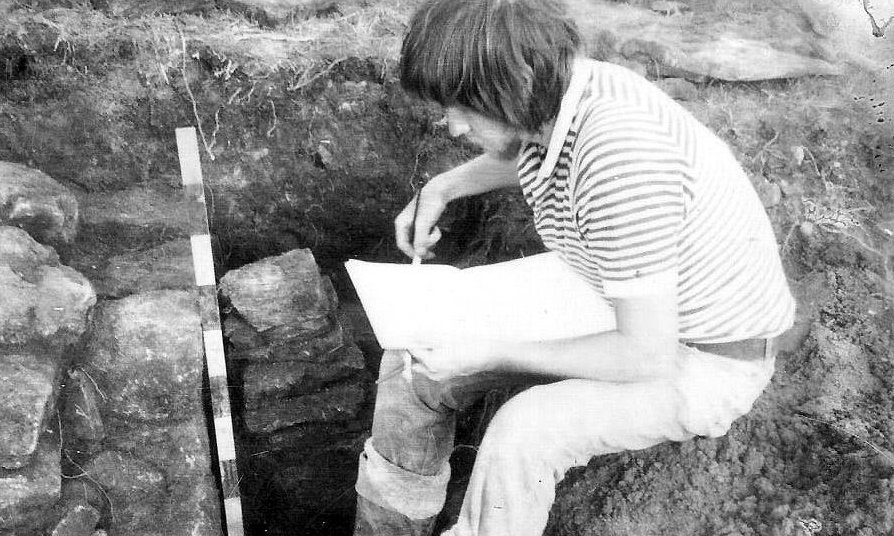
- Published11 August 2024
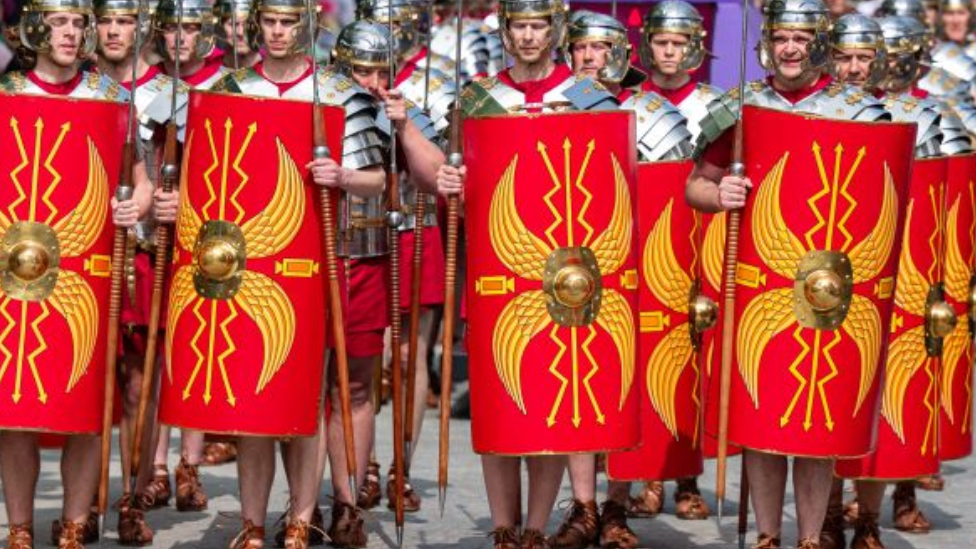
- Published12 January 2019
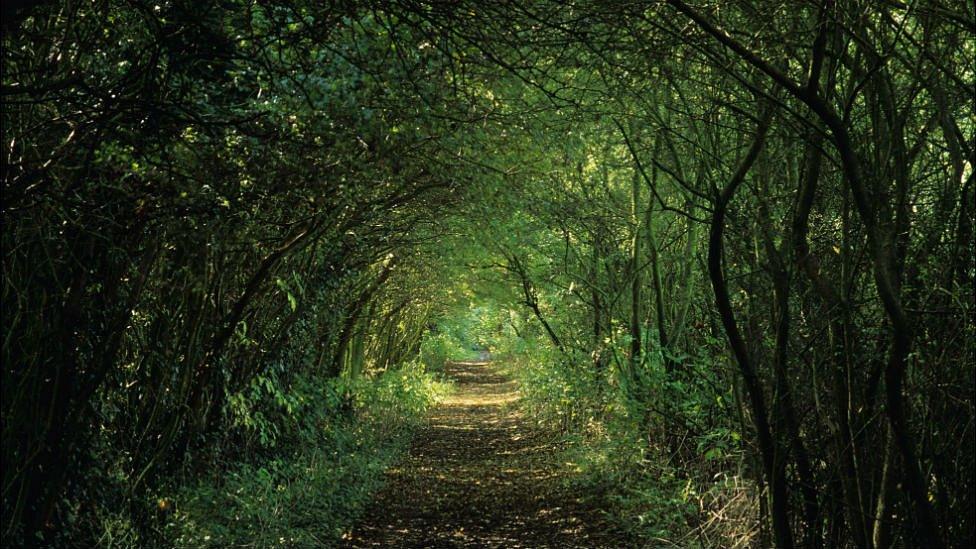
- Published29 March 2011